Lotta critics reviewing Men in Black 3 have wondered what was the necessity for it. Who was really craving Men in Black 3? As garrulous A.O Scott puts it, “Can you think of a new movie with less reason for existing than Men in Black 3?”
Why, yes, yes I can, as a matter of fact. But A.O. immediately realizes his question is stupid and answers it himself:
What? “Battleship”? Yes, O.K. Good point. Hadn’t thought of that. “What to Expect When You’re Expecting”? Fair enough. But still. “The Avengers”? Let’s not go there. And stop interrupting me when I’m trying to make a serious point.
Can’t help interrupting you, A.O., if you’re going to blather like that.
Nick Pinkerton of The Village Voice is in a similar snit about MIB3 because, he claims, not only did no one ask for this movie, no one can even remember the earlier Men in Black movies:
Can any one of the millions of Americans who saw Men in Black 2 in 2002 describe its plot today? A single scene? I saw both MIB movies upon their original release and have as little memory of the experience as if I’d been mind-wiped with one of those “neuralyzing” flash sticks that Will Smith and Tommy Lee Jones use to give amnesia to witnesses of supernormal incidents.
The irony here being, of course, that that’s the main thing people remember from MIB, the wonderful memory-wiping neuralyzers. MIB the First was peppered with little insights and clevernesses in its alternative explanation for how the world works. Our “alien population” is partly extraterrestrial; they live among us generally disguised as fellow humans, which explains creatures like Newt Gingrich and Dionne Warwick and Sylvester Stallone and supermodels. The top-secret “men in black” police them and prevent any slip-ups from becoming public knowledge by using neuralyzers. (Except for occasional stories leaking out in the supermarket tabloids, which actually report the truth about aliens but nobody believes them.)
Neuralyzers are terrific because they’re such an apt tool for our era. They seem to explain the way we are now: addled, horribly mind-fucked, Philip K. Dicked, not sure what just happened, unable to reliably recall how we got here long enough to do anything about it. Amnesia is the condition of our age, like the doomy po-mo theorist said. Or if he didn’t say that, he said something just as good. What was his name again?
Anyway, Men in Black 3 maintains just enough of its old cheerful, casual charm to get by, with slap-dash direction by Barry Sonnenfeld and a hit-and-miss script by Etan Cohen (Idiocracy, Tropic Thunder). It’s centered on a nice conceit about Agent J (Will Smith) time-traveling back to 1969 to prevent a rampaging alien (Jemaine Clement of Flight of the Conchords) from killing Agent K (Tommy Lee Jones), or rather, Agent K’s younger, somewhat less crusty self (Josh Brolin). Brolin does a great impersonation of Tommy Lee Jones, as has been widely reported, nicely conveying Jones’ steady hangdog gaze and shrewd Texan drawl. Michael Stuhlbarg (the lead in the Coen Brothers’ film A Serious Man) avoids most of the pitfalls of his alien star-child character, Griffin, who can see all possible future realities at once. (“Oh, I hope it’s not the one where Agent K forgets to tip the waitress…”)
And Bill Hader is a riot as Andy Warhol, portrayed here as an MIB agent working undercover as a phony art-guru. Assigned to monitor the alien life teeming at The Factory, “Andy Warhol” is desperate to get out of the assignment because he’s running out of fake-art ideas and is reduced to “painting soup cans and bananas.” Hader does a beautifully dreamy, vapid Warhol-performance that switches off hilariously when he clutches Agent K and begs him, “You’ve got to fake my death, man! I can’t listen to any more sitar music!”
Which brings us to the interesting retro qualities that were always a satisfying part of MIB. The signature black suits of the agents, cut severely, their skinny black ties and matching black sunglasses, make them look like either highly placed, secret government officials or West Coast jazz band members circa 1965.
The MIB agents preserve their look of high-modernism from the 1950s-early ’60s, long past the high-modernist era (i.e. the last generally good-looking era) into the 1990s, 2000s, 2010s. They embody an alternate reality that was headed toward a Jetsonesque Space Age utopia. Their headquarters are all clean lines and confident austerity and miraculous design flourishes.
But this gleaming, competent, hopeful world is only enjoyed by a small elite cadre of alien-managing bureaucrats, officials, and enforcers operating in secret. Meanwhile the rest of the world grubbed along into the huge bummer of the late ’60s, then the ’70s and ’80s and all the messy, moldy-looking decades we’ve lived through.
It’s telling that the movie time-travels back to 1969, a few years past the pivot point away from high modernism, toward degrading hideousness. (I just went to a museum exhibit documenting America in 1968, a very, very bad year for a lot of reasons, not least of which was the capering-idiot-in-multicolors hippie aesthetic takeover. The only people who looked good in 1968 were the people wearing black. That is, Johnny Cash; Martin Luther King Jr. before they shot him; Elvis in black leather for his television comeback performance; Huey Newton—nice beret! that guy could accessorize—and the Black Panthers; and those two Olympians in black track suits and matching gloves who gave the Black Power salute during the medal ceremony. Everybody else, gah.)

In the 1969 sequences of MIB3 the aesthetic development of the “normal world,” as lived by the American majority in a state of ignorance and increasingly ugly color schemes, is already moving rapidly away from the agents. We just see the beginnings of the visual polarization, especially in the shots of ungainly, lumpy, bespectacled citizens in their gold-and-avocado-colored livings rooms watching the Apollo 11 moon launch on TV. They show us the early schism leading to the contemporary MIB scenes featuring Space Age/Cool Jazz agents “wiping clean” all the alien spew, human mess, and nasty memory, before letting the whole unsightly circus crank up again.
It’s fantasy, see, and it’s always intriguing to see what we like about a fantasy.
Nick Pinkerton doesn’t see it that way. He recognizes the MIB films’ “retro-futurism,” but disapproves strenuously, because he finds MIB3 to be, um, unrealistic about the late 1960s:
As for the time-travel culture shock, you get a few hippies with speaking roles and no significant engagement with the zeitgeist of the era. “It wasn’t the best time for your people,” J is warned as a black man traveling into the vicinity of the MLK assassination, but aside from a light-comic profiling scene, Martin Lawrence‘s Black Knight had about as much to say on race relations as MIB3 does.
He’s even upset that Hader’s Warhol isn’t a strictly accurate portrayal:
Hader’s Warhol says things that Warhol would never conceivably say…and functions as a condescending stand-in for “freaky” ’60s counterculture as a whole, dismissed with a smug emperor-has-no-clothes twist.
Sigh. See, he’s right in a way, but only in an automatic, Village Voice-ian way that’s like a constant defensive crouch against anyone who might not revere every aspect of the ’60s-’70s counterculture glory days. There’s no question the movie “sides” with the romantic high modernist/Great Society vision of the world that preceded it. At least as encoded in the films’ production design, that’s where knowledge, restraint, ingenuity, tolerance, and urbanity reside. And production design arguments can be interesting things to watch.
Read more: 1969, Andy Warhol, Barry Sonnenfeld, Bill Hader, counterculture, Josh Brolin, time travel, Tommy Lee Jones, Will Smith, Eileen Jones, movies


Got something to say to us? Then send us a letter.
Want us to stick around? Donate to The eXiled.
Twitter twerps can follow us at twitter.com/exiledonline




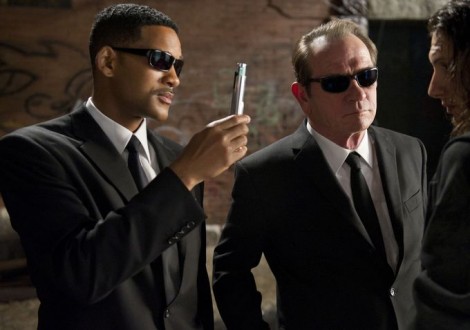
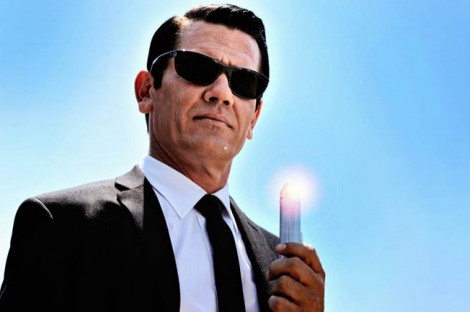
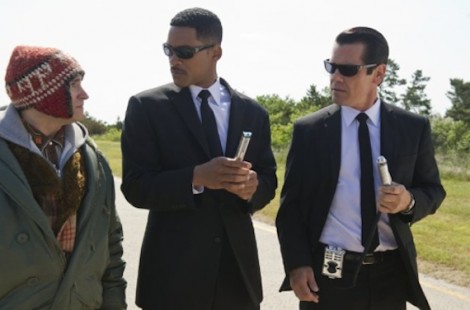

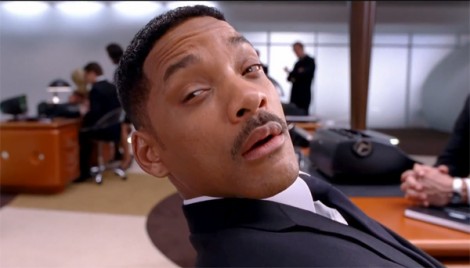

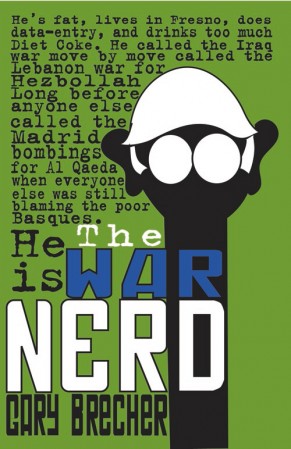

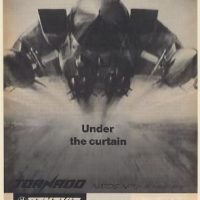







38 Comments
Add your own1. John Figler | May 28th, 2012 at 4:39 am
Maybe because production design arguments are the only thing left to watch…
2. The Gubbler | May 28th, 2012 at 4:48 am
Dionne Warwick – Don’t Make Me Over
http://www.youtube.com/watch?v=fdrfyRKyAF4
Dionne Warwick – Anyone Who Had A Heart
http://www.youtube.com/watch?v=iykG_XqWnVE&feature=related
Dionne Warwick – Walk On By
http://www.youtube.com/watch?v=JzCkD3vRukA&feature=related
How easily you dismiss Dionne Warwick.
I vaguely remember reading an review not altogether without some measure of similarity to yours in the New Yorker about a previous MIB film.
3. c1ue | May 28th, 2012 at 6:13 am
Thank you for your good work. It is wonderful to see a movie critic that is able to recognize a movie for its intent and audience as opposed to its ability to fit into smarmy ‘art’ views.
A mindless movie with some intelligence and humor is something I’d rather see than an art movie that no one but a bunch of navel gazing art movie critics would appreciate.
4. The Gubbler | May 28th, 2012 at 6:23 am
Re: The only people who looked good in 1968 were the people wearing black. That is, Johnny Cash; Martin Luther King Jr. before they shot him; Elvis in black leather for his television comeback performance; Huey Newton—nice beret! that guy could accessorize…etc. … gah.)
The Stranglers looked pretty good ten years later in the UK…
The Stranglers – Tank
http://www.youtube.com/watch?v=7xH9_9znxWM
Anyhow… the prize hidden at the bottom of the cracker jack box is this tune from 1978….
The Stranglers – Meninblack
http://www.youtube.com/watch?v=m4UuH50gfK0
Also see
The Stranglers – Waltzinblack
http://www.youtube.com/watch?v=kFeykueEZNI
and for further reference….
The Stranglers – Walk On By
http://www.youtube.com/watch?v=jqfqVDHNW6c
5. gc | May 28th, 2012 at 7:29 am
With all the considerable respect due to the world’s greatest movie reviewer – no.
http://www.blu-raystats.com/img_scr/JimiHendrixExperienceLiveatMonterey_602517796355_4.png
http://th07.deviantart.net/fs71/PRE/i/2010/168/9/c/Colourful_Hippie_Girl_by_jolantajola1.jpg
Are the hippies easy to make fun of? Yes. So are many other beautiful and/or good things.
As for celebrating the modernist/Great Society era, yes, it does imply celebrating its belief that civic institutions and technology can and should be used to better people’s lives, but it also implies celebrating its “Golly, Dr. Quest!” deference.
6. Flatulissimo | May 28th, 2012 at 8:28 am
I know you like the suits, Eileen. You already established this with your review of Archer (which I also love). I know you think the 60s hippie clothes are hideous. In retrospect, sure, they mostly are.
But far from representing a “romantic high modernist/Great Society vision” the black suits and skinny ties represented repression. They were a uniform – that’s what everybody HAD to wear. Sure, they look nice, but not so much if you were required to wear them every time you left the house. Part of the hideousness of late 60s and 70s fashion was open rebellion against having to wear a damn suit like that every day of your life.
In retrospect, sure, The Who in 60s Mod clothes looked great, and The Who from the “Who’s Next” era looked horrible. And it’s a shame that the unlimited freedom to choose what to wear has led us to our current fashion apocalypse of sweatpants and crocs. But if you got told that you had to wear the same suit as everybody else every goddamn day, you’d probably rebel by wearing something ridiculous, too. And I don’t think, say, Black Sabbath’s first album would have even been possible with the members all been wearing black suits and skinny ties.
7. Phil | May 28th, 2012 at 9:09 am
Might check it out for the Heder cameo.
8. DocAmazing | May 28th, 2012 at 9:39 am
It would be interesting to see how many people slagged MIB3 and raved over Mad Men.
9. paul blart | May 28th, 2012 at 10:07 am
this review could have gone on longer
10. nestore | May 28th, 2012 at 10:21 am
Sounds like shit. Not merely full of smarmy notalgic cultural refereces like Austin Powers…the whole movie IS a smarmy, nostalgic cultural flashback. Hey wunnit great when we actually HAD a pop culture!? lets take (yet another) hollywood trip to yesteryear! Not that i blame anyone for wanting to retreat to 1968, given the present alternatives, but i’d rather watch the Yellow Submarine, or the Woodstock movie, or a Hammer flick.. or the actual Dark Shadows and not the shitty tim burton travesty.
11. Cum | May 28th, 2012 at 10:43 am
So MIB must have done an obligatory David Bowie reference by now, right? Its bound to have popped up at some point over the course of three movies about how weird people are really aliens.
12. Doctor Memory | May 28th, 2012 at 1:52 pm
Well, now we know how to make Eileen Jones give a middling-to-positive review of a piece of tossed-off studio hackwork: cast a couple of people who’ve also been in Coen Bros movies (so she can mention the Coen brothers, again.) and put them in nice suits.
13. Punjabi From Karachi | May 28th, 2012 at 2:03 pm
Knowledge
Restraint
Ingenuity
Tolerance
Urbanity
Eileen, great to see a statement of principles from you. I’m impressed.
the movie “sides” with the romantic high modernist/Great Society vision of the world that preceded it. At least as encoded in the films’ production design, where knowledge, restraint, ingenuity, tolerance, and urbanity reside
14. korman643 | May 28th, 2012 at 2:18 pm
@5 If you take the music away, Jimi Hendrix look like a bad Prince impersonator. Not cool at all, and definitely less cool, than, let’s say, Willie Dixon. It’s the music that made him great, and the music was something that, at the end of the day, had been the result of the 1955-1965 era, not the mess afterwards. As far as I’m concerned, there’s almost nothing from the 1955-1965 era that look uncool today. It was a fantastic moment for the Western civilization, like everything was on the verge of a big evolutionary jump towards God knows what (the definition is not mine). And then everything went sour, and we were left a slow de-evolutionary collapse towards Pink Floyd, U2 and Queen and Margaret Thatcher and Regan, and Rap and… oh, sod it off, I’m getting depressed.
15. Mason C | May 28th, 2012 at 3:50 pm
Another excellent review, fun to read and more useful after (maybe) watching MIB3 in six months’ time.
DVD heads up/plea for a review: Woody Harrelson in Rampart. I won’t ruin it for anyone except to say it’s fuckin’ art – the antidote for when you’re convinced that noir is dead and American film will suck balls forever.
16. Mark | May 28th, 2012 at 4:23 pm
To paraphrase Karl Marx, it is very convenient to be “stylish” at the expense of the hippie era.
Mad Men fans probably noticed the infiltration of plastic into the interior design of the current season (1966) of the show. I would agree that the pre-plastic decor of wood and metal is the high point of modernism.
17. helplesscase | May 28th, 2012 at 5:33 pm
When I was growing up, I noticed that all the old anarchists seemed to dress “square.” Suits: good enough for the Bonnot Gang, good enough for me.
18. mijj | May 28th, 2012 at 6:13 pm
movies that time travel to the 60s should have no=none=not even a sideways glance=not even a peripheral throwaway reference to what we imagine was the 60s culture.
Most people’s heads are immersed one generation behind the vanguard of the times. If there’s time travel to the mid 60s then all cultural references should be to the early 50s.
19. gc | May 28th, 2012 at 7:02 pm
Easy to say that; just as easy to say “If you took the music away, Johnny Cash looks like a bad Everlast impersonater.”
Doesn’t make it so. Jimi looked magnificent.
“Result of the 1955-1965 era” implies that what Jimi Hendrix did in the late 60s was a degraded version of what came before, which is nonsense.
As for name dropping old bluesmen and preferring 1955-1965 to the late 60s, that’s just hipster boilerpate. Eileen has demonstrated that she’s more than that, but you aren’t Eileen.
20. radii | May 28th, 2012 at 9:22 pm
pretty much every Warhol impersonation by an actor in the movies and tv has been funny – he was ripe for parody – I like Bowie’s version and
21. korman643 | May 28th, 2012 at 10:09 pm
@19 You’re not paying attention to what I said. I’m not stupid – of course the music did evolve from the 1955-1965 baseline, and in some case the evolution was huge, at very least until the early 80’s (and in few cases even later than that). But it’s telling that everything seriously good done after, let’s say, 1967, was trying to follow some of the guidelines laid before – punk did that, heavy metal did that, “heavy” psichedelia, disco did that. Everything else, and I mean EVERYTHING else went bummer or got stuck in some kind of dead end. It was like the generation before had set a blueprint, and anything seriously deviating from that blueprint was bound to fail. That not hipster boilerplate, that’s reality.
What Eileen says it’s a very precise statement that has nothing with that – she’s saying that the western world LOOK (the aesthetics) of everything following 1965 was inferior to anything immediately preceding it. And that’s because the 1955-1965 aesthetics were the result of a world “that seemed on the verge of accomplishing something that was worth attaining, despite the usual mess of the world” (not my concept here, I must admit). After 1968, the world decided future had been indefinitely postponed, and the look of a world without future was the result.
22. Ozinator | May 28th, 2012 at 10:33 pm
I agree with gc, but she/he is not very nice. Also, Pink Floyd was the only big mainstream voice (I know of) against Thatcher….so well done! Fuck all that we gotta get on with these!
23. DrunktankDan | May 28th, 2012 at 11:03 pm
@6 Flat had the most intelligent comment concerning fashion in the history of the Exile(doline)!
Kinda like being the skinniest kid at fat camp but still, nice to see. It would have sucked to be reminded of your drone status day in day out including the very fabric on your body.
24. adam | May 29th, 2012 at 7:50 am
Sorry, Eileen, but the skinny long tie look was nothing but a regression from the bold, short and thick ties of the 30’s and 40’s.
25. Big Gay Baby | May 29th, 2012 at 8:04 am
@15. Second the love for Rampart. Subverts LA noir in unexpected ways. As a bonus, Harrelson’s cop is something of a dandy when he’s not on duty, complete with a great casual southern California wardrobe
26. atlas_lied | May 29th, 2012 at 8:40 am
I know the discussion is starting to go off tangent, but I have to add my $0.02 to the discussion about aesthetics. Normally I don’t care about it, no one should.
But the “modernist” architecture in question wasn’t really reflective of any higher standard of culture. Modernist architecture started off in Weimar Germany (with a weird tropical offshoot in Brazil) as an ambitious attempt to house people humanely and efficiently. See the Weissenhof Estate in Stuttgart. Then Philip Johnson popularized it in America, stripped it of its initial progressive ideology, and marketed it SOLELY based on aesthetics to any number of wealthy corporate clients. Philip Johnson was heir to a fortune, a fascist wannabe, and great friends with others in the land development/real estate manipulation complex. Later on Philip Johnson adopted postmodernism, then deconstructivism, basically any “ism” that was fashionable.
Unfortunately Johnson and his ilk still bought their intellectual credibility, and media exposure, and the Pritzker Awards (Robert Fitch wrote about their links with Obama) are given by the real estate magnates to whatever aesthetic they like.
27. atlas_lied | May 29th, 2012 at 8:45 am
Pink Floyd was pretty much against the mindless capitalism of the 70s era. The Dark Side of the Moon had “Us and Them” and “Money”, and the entire Animals album was one long melodic rant against the prevailing system.
And anyways, aesthetics are just aesthetics, it’s the thinking and the actions that count.
28. gc | May 29th, 2012 at 10:11 am
@21
Well, which are we saying? After 1965 or after 1967? It’s not a trivial difference; it’s the space of time between high modernism and high psychedelia.
If we’re saying “after 1967”, then okay, yes, somewhat true – though, to keep things in perspective, you could say the same with equal truth about all Western visual and literary art (though not music) between the end of the high Renaissance and the 19th century. (Allowing that the “Renaissance” in say, England, started and ended later than in Italy.)
Yes, that is what Eileen is saying; and I’m disagreeing, for reasons stated in my first comment.
29. 69 Anytime 88 On a Date | May 29th, 2012 at 11:06 am
So tell me, we know the Mets take the World Series, but does Will Smith discover his true self and join the Stonewall Riots?
30. super390 | May 29th, 2012 at 4:20 pm
Well, isn’t the point of “Mad Men” that a smooth facade hides an empty soul? As long as everyone is pressured to conform to that model, the secret is kept. But when individuals start rebelling and improvising their self-image, the Don Drapers get exposed.
31. bulfinch | May 29th, 2012 at 4:30 pm
I don’t know…I think if 2001: A Space Odyssey had predicted the future of menswear correctly – wherein the entire latter half of the 20th century would have been one long, uniform, continental styled, square cut Keir Dullea-looking trip – the world would have been a far duller place for it. The modern, Ivy League look is a look that’s always been easy to like, but it’s a little more interesting to me when white bread starts changing colors and growing hairs. Texture is good.
Richard Harris springs to mind: here’s an actor who wore that solid buttoned-up style really well back in 1961, but just ten years later, looked like an insane, psychedelic footballer — which was actually a more interesting look, in my opinion. Likewise, Marlon Brando looked his coolest on the Dick Cavett show in 1973…
32. Trevor | May 31st, 2012 at 10:35 am
Might be worth a rental just for the Bill Hader factor. Warhol was a pretentious hack.
33. CensusLouie | May 31st, 2012 at 2:36 pm
Speaking of black, here’s a great launch pad for a new War Nerd article!
http://i.imgur.com/K3mgn.jpg
34. internal exile | June 1st, 2012 at 5:26 pm
I’m gonna go out on a limb here and ask: why don’t you review movies that are WORTH A DAMN?
35. R.D. Knudtsen | June 4th, 2012 at 8:09 am
Give us more reviews! Roy Rogers, Gene Autry, Buster Crabbe, Maria Ouspenskaya. Caesar and Otto Meet Dracula’s Lawyer, Debbie Does Dallas . . . Again. Wow! A bottomless barrel of material.
Then, an overnight Exile rebrand. Call the new site Photoplay, Silver Screen, or Movie Mirror. A 50,000-word review of The Beast of Yucca Flats. We deserve it.
36. gink | June 7th, 2012 at 8:34 pm
Cars from 1965 to 1969 were some of the most gorgeous cars every made. Many car companies now are stealing design ques from them to attempt to bring back the magic that is lacking.
Interesting enough once 1970 rolls around American and British cars especially become increasingly hideous and deformed reaching a peak around 1974.
Even the detour into madness and deformity was more welcome then decades of blandness that followed.
37. anon | June 8th, 2012 at 12:35 pm
The first Men in Black (haven’t seen the second unfortunately) was an absolutely fucking fantastic movie that I could still watch today for pleasure (and I’ve torrented it many a drunk night solely for that purpose). That’s usually my test of a film’s quality: how often does it make me want to go back and see it again?
I’m partly just a sucker for all things in the whole UFO lore paddock (Area 51? Project Montauk? Pass me the Kool-Aid, I’m in) but MIB was a great, funny, . I think one of its successes too is that even though it was a comedy, it took its internal premises seriously, like all good sci-fi: it didn’t “spoof” itself or layer pointless sheens of irony onto the plot. Things that were established in the movie stayed true and consistent (hence why there was no stupid clause getting K out of having his mind wiped after retiring at the end). Real good stuff.
38. Flatulissimo | June 9th, 2012 at 3:15 pm
Eileen, you’d better be writing your Prometheus review right now.
It is the only movie coming out any time soon that I am even remotely interested in, and the reviews are all over the place. I’m hoping for the best, but I realize that it is probably going to suck huge donkey balls.
Leave a Comment
(Open to all. Comments can and will be censored at whim and without warning.)
Subscribe to the comments via RSS Feed